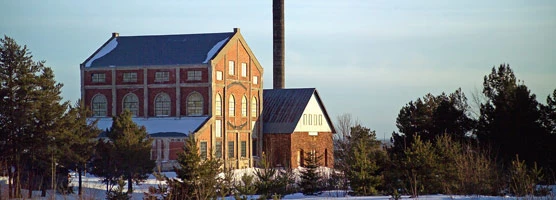
NPS Photo, Dan Johnson. Where is the park?Visitors are often confused as to where the park is located, since it is unlike most national parks. There are no entrance gates or campgrounds. The park visitor center is located at 98 Fifth Street in Calumet, and offers three floors of interactive exhibits depicting the life and times of miners and their families. The Calumet Visitor Center is the best place to plan your visit to Heritage Sites, join a ranger on a guided tour of downtown Calumet, and purchase park souvenirs from the Isle Royale & Keweenaw Parks Association park store. The park was established to work in partnership with a variety of organizations to help preserve the resources and stories related to the copper mining era on the Keweenaw Peninsula. The designated units are located within living communities and former industrial sites. Most of the land within the park is and will remain privately owned. The park owns only selected parcels of land and buildings to preserve significant historic resources. What is special about copper?It is a ductile metal with excellent electrical conductivity. It has extensive uses including as an electrical conductor, as a building material and as a component of various alloys. What was copper used for?During the time of Keweenaw copper mining it was used in making munitions, as a sheathing on wooden-hulled ships, for decorative building features and as a component in making bronze and brass alloys. Later copper became important for making electrical wiring and water piping. In addition to its past uses, copper is now an important component in computer chips. How did the copper form?There is still debate on the specifics of the copper formation process here but in a nutshell here is what happened. Around 1 billion years ago, a rift similar to the Rift Valley in Africa formed in the region and nearly ripped this part of North America in two. Over millions of years, large lava flows issued from the rift and spread across the landscape. In between the flows erosion carried sediments into the area so that the rock layers looked like a layer cake made of lava and sediments. The area around the rift settled, turning the edges of the rock layer up. Cracks formed in the layers of rock that allowed a mineral-rich solution to penetrate. The conditions were right that over time as the solution hardened, it formed copper. Where can I take a tour of a copper mine?Three of our partner sites, Adventure Mining Company, Quincy Mine & Hoist Association, and Delaware Copper Mine, provide either guided or self-guided tours. Fees are charged. What are Keweenaw Heritage Sites?The sites are places scattered throughout the Keweenaw Peninsula that have either natural or historic resources that relate to the region's copper mining story. The park works with these sites to help preserve and interpret these features for visitors. The sites are independently owned and not managed by the National Park Service. What is a pasty?A pasty is a type of pastry or turnover, originally from Cornwall, United Kingdom that was traditionally filled with diced meat and vegetables. Miners often carried them as their dinner in lunch pails. |
Last updated: May 30, 2024
